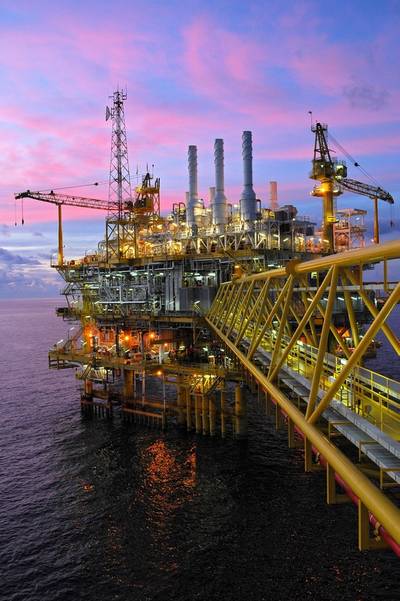Electrification is Key to Decarbonizing the North Sea
The UK government has set ambitious climate change targets within the oil and gas industry, with The North Sea Transition deal aiming to reduce emissions by 50% before 2030. In the most recent emissions report published by the North Sea Transition Authority (NSTA), the 2025 and 2027 targets appear achievable through natural field decline, targeted flaring reduction initiatives, and improved plant production efficiencies. However, in a ‘business as usual’ case, a gap emerges of about 1.5-2 million tons (mt) of CO2 against the stated 50% reduction target.
Electrification can be a key enabler to reduce offshore emissions and meet the target set by the NSTA, and the integration of oil and gas expertise with renewables can play a pivotal role in decarbonizing oil and gas facilities through electrification. Focusing in on decarbonization plans now can enable these targets to be met, whilst delivering energy in a more sustainable way.
The scale of electrification
Electrification of offshore oil and gas facilities requires integration of connection to onshore grid, a power cable from shore, offshore transformers, array cables, modifications of topsides and, in some instances, offshore wind integration. The infrastructure, today, does not exist and requires considerable engineering, investment and co-ordination at scale to enable electrification of the North Sea to be realized before 2030.
We estimate that up to 400MW of power generation needs to be fully electrified by 2030 (equivalent to 10-20 facilities with relatively high-power demands) to achieve a 1.5-2 mt CO2 annual reduction in Scope 1 emissions from electrification. If Scope 2 emissions are included, the number of assets electrified would need to be higher to factor in the carbon intensity of the UK grid, which currently on a good day achieves c. 50% renewable power generation.
To achieve the 1.5-2 mt reduction in CO2 emissions through electrification, Xodus’ analysis estimates that the overall CAPEX needed could be in the range of £3.5-5 billion depending on the level of electrification, the number of assets electrified, and size of offshore wind installed. Based on the projected remaining reserves in the North Sea in 2030, the cost of electrification is £0.9-1.3/boe, which at a basin level would represent a cost of c. 2% of current oil price.
The North Sea benefits from a relatively high asset density compared to other basins, which lends itself well to hub-based electrification solutions, where power is centralized and distributed to facilities. However, even in the case of the Central North Sea (CNS), the distance between the most southernly and northernly assets is 240 km, which means in a CNS hub solution, some assets may miss out.
As well as location, remaining life of the asset is a key factor when deciding whether large scale electrification is economically attractive given the likely investment required. Operators should consider alternative solutions that can address electrification in a cost-effective manner over a shorter time, such as connection to existing nearby wind farms or partial electrification schemes on a single asset basis using offshore wind.
Partial electrification emissions reduction savings will be considerably lower than full electrification but can potentially be achieved with relatively minimal brownfield modifications. Xodus recently carried out a study within the North Sea and identified that partial electrification could save an oil platform approximately 20% of its emissions; the project could be deployed earlier than hub projects and was estimated to be cost competitive in terms of abated CO2.
The electrification challenge
We estimate that £3.5-5 billion of CAPEX may be needed for electrification projects to decarbonize the industry. This is incremental to any investment needed to develop future hydrocarbon resources and is a considerable investment in a basin which has seen a historical declining trend in investment that competes for capital with other energy basins.
Timing of electrification is key to delivering a meaningful impact on reducing emissions, whilst ensuring there is sufficient remaining life in assets to justify development. If projects slip to the right, the economic justification for electrification becomes more challenged. The legislative pathway for electrification is still evolving, thus increasing uncertainty for projects.
To achieve major emissions reductions through electrification requires collaboration at an unprecedented level. Collaboration is needed not just within the oil and gas sector between asset owners but across offshore wind, the grid, infrastructure owners, supply chain, finance, and regulators across each of these sectors.
Electrification of oil and gas facilities crosses multiple sectors and, to be successful, it needs alignment and integration between these parties. Engagement is already underway but is it happening fast enough to ensure that electrification can be successful and impactful to deliver the emission reduction needed?
Opportunities to decarbonize the industry
Although there are a number of challenges that need to be overcome to successfully deliver electrification projects in the UK, electrification does also offer opportunities.
Partial electrification or supplementary electrification enables the decarbonization of stranded assets and delivers potential incremental gains in the overall basin. In isolation, these projects are unlikely to make a material impact but, scaled on multiple assets, they can support the wider UK decarbonization effort.
A clear opportunity through decarbonization of oil and gas facilities is reduced exposure to future carbon price. Over the last three years, the carbon price within the EU and UK has increased materially from below £30/ton to currently trading at c. £90/ton, which has outstripped many observers’ projections. This trend is likely to continue as we enter a carbon constrained market in Europe. Reducing emissions will have the benefit environmentally, but also from a cost perspective.
On the technology side, the challenge of needing to electrify existing oil and gas facilities represents an opportunity for development of innovative technical and commercial solutions. An obvious prize is supporting the development of floating wind technology so that it can be deployed at scale within the UK and internationally.
To meet 2030 targets without turning off the lights, electrification at scale is required to decarbonize the oil and gas industry within the UK and a basin wide approach is likely needed to achieve the North Sea Transition Deal targets. Action is needed now to engage and integrate across the energy sector, as failing to deliver could come at a greater cost.
 About the Author
About the Author
Daniel Paterson is a principal consultant at Xodus, providing technical and commercial advice across upstream, midstream and renewable sectors. Image courtesy XODUS











